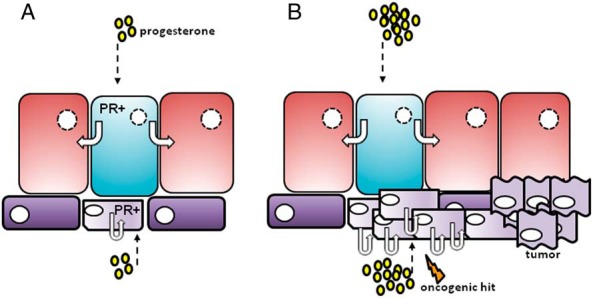Figure 3. A, During normal development, P stimulates proliferation of luminal cells by acting on PR+ luminal cells (shown in blue), which signal to neighboring PR− cells (shown in red) in a paracrine manner. In addition, P may further expand the epithelial compartment by direct stimulation of a subset of PR+ basal/progenitor cells (shown in light purple), which proliferate via autocrine mechanisms. B, When P levels are particularly high (during the luteal phase and pregnancy) or after exogenous hormone use, this proliferation may be increased, potentially providing a larger pool of PR+ progenitor cells susceptible to oncogenic hits, which may then increase the risk of tumorigenesis.

